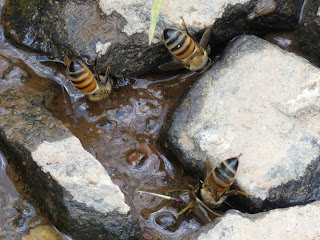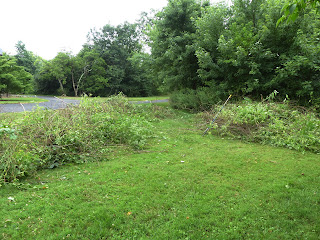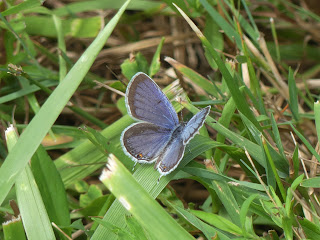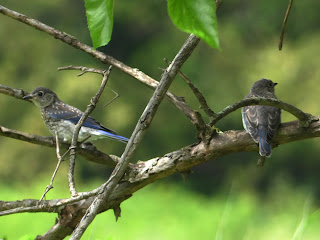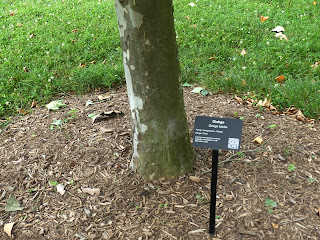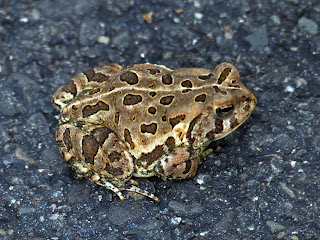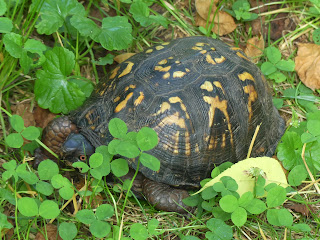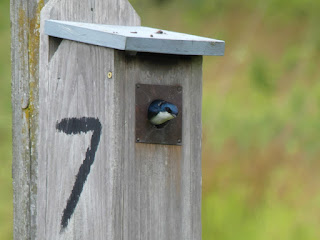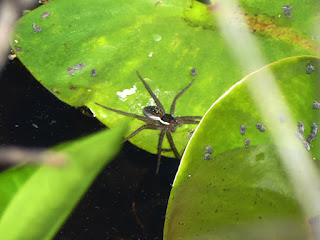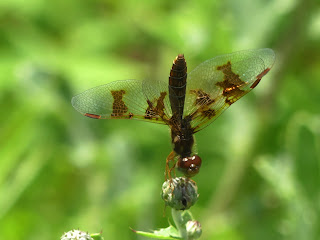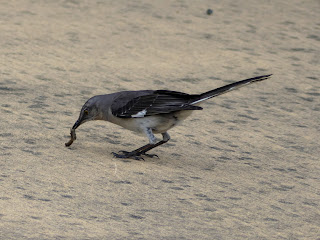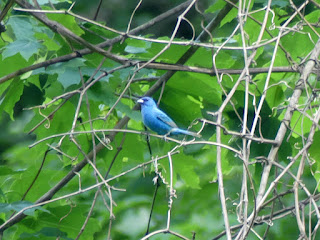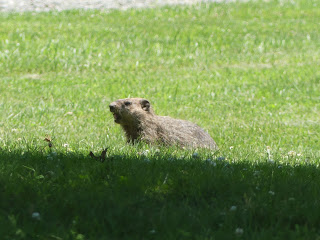Female Blue Dasher

I see lots of male Blue Dashers but see females less frequently. I think this is a female. Certainly there's no pruinose , the eyes are brown rather than the blue-green of adult males, the end of the abdomen doesn't appear to have "claspers" [1], and the abdomen looks shorter than I usually see on Blue Dashers. Of course, immature males can have reddish-brown eyes and lack pruinose while claspers can be a little hard to see and abdomen length is a somewhat subjective field mark. For contrast, here's one that I convinced myself to be an immature male. I'm not sure why I see so many presumably male Blue Dashers and relatively few females, though the territorial nature of the males is presumably a factor. Rather than spending almost all their time eating prey and hiding from predators until they're ready to mate like the females, the males aggressively defend territories near water where I know to look for them. Perhaps while the females are discreetly chow...
